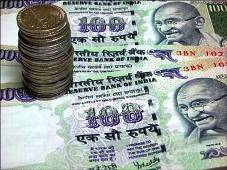 In a sea of highly leveraged balance sheets, just 57 companies stand apart.
In a sea of highly leveraged balance sheets, just 57 companies stand apart.
These have over Rs 1,000 crore (Rs 10 billion) of cash and investments on their books, making up at least 10 per cent of their market capitalisation.
Their debt is also manageable (debt-equity of less than 1 time; in fact, below 0.5 for most).
These 57 companies account for 37 per cent of the combined market cap of Rs 52,63,896 crore (Rs 52,638.96 billion) of the sample of 2,095 companies under study, their share in the total cash and investments of Rs 976,564 crore is a shade above 51 per cent -- of this, almost 55 per cent are cash and bank balances.
There's more. Most of these companies have reported steady cash flow from operating activities. A third of these are owned by the government.
So, are these companies using their surplus cash for new investments? The answer is, they are, but only selectively. IL&FS Group CIO Vibhav Kapoor says: "There has been some aversion in investing in new capacities, because the economy has been slowing and companies are not sure of the demand scenario."
Ambareesh Baliga, an independent market expert, agrees: "Most cash-rich companies are not investing, as they may not be getting the right projects. Also, the overall demand is weak."
Besides slowing demand, a big issue worrying companies is the investment climate. Manish Sonthalia, fund Manager at Motilal Oswal Asset Management Company, says many companies have lined up cash, either for acquisitions or to build additional capacities. Companies in some sectors are not investing because of regulatory issues.
Take for instance, the power sector. The average PLF of the power plants which are already up and running is not more than 60 per cent because of non availability of fuel . Of the new plants coming up, while construction is nearing completion there is no availability of coal or gas. "It's not just that high interest rates are deterring investments, it's also because regulatory and investment climate is uncertain," Sonthalia adds.
Among sectors, FMCG, information technology, pharma, auto, oil & gas, cement and consumer durables are big cash generators or have huge cash and investments on their books.
Experts say the idea of sitting on cash in these times is also to wait for lucrative opportunities, rather than run behind these. But, companies are unlikely to acquire, unless an acquisition is available at distressed valuations.
It's not that companies have stopped investing. They are doing so very selectively, based on their assessment of a business, future growth as well as constraints they are facing. Among companies that continue to invest for the future, Sonthalia says, auto takes the cake. Even as volume growth has slowed down, Maruti, Hero MotoCorp, Bajaj and Bosch, among others, are building new capacities.
Last two years have also seen the Vedanta group acquire Cairn India and Mahindra & Mahindra acquire Korea's Ssangyong. In fact, Cairn India itself is now looking at increasing its output and exploring new blocks to secure additional oil & gas reserves.
On the PSU front, Coal India, SAIL and NTPC have large expansion plans. SAIL's capacity expansion is underway, while projects are going slow in the cases of Coal India and NTPC due to issues related to clearances and fuel. For example, Coal India, which has cash and bank balances of nearly Rs 60,000 crore, is battling with delays in forest clearances for 178 of its projects. Sonthalia says, PSUs might start investing once the National Investment Board (NIB) is in place, as it would facilitate faster decisions. That is when this cash should go into investments.
Baliga cites the example of Reliance Industries, which has the highest amount of cash and investments. He says the company is sitting on cash, but will not invest until there is clarity on gas prices. Reliance, which invested Rs 23,000-34,000 crore annually in purchase of fixed assets between FY08 and FY11, invested only Rs 16,400 crore in FY12. Although it has drawn up plans to expand part of its domestic capacity and make investments in shale gas joint ventures abroad, going by the net capex run-rate of Rs 8,528 crore in the first half of FY13, the current year may see a similar trend.
However, Sonthalia says: "RIL has an off-gas cracker and pet coke re-gassification project. These will require an investment of $9-10 bn (about Rs 55,000 crore), which are going to commission in the next two-three years. A major portion of the cash flow (and cash and investment holding) will be invested in these two projects."
In its Greed & Fear report, CLSA analysts have said the share of private corporate capex in gross fixed capital formation has fallen from 43 per cent in FY08 to 33 per cent in FY11. The trend hasn't reversed since.
What is of real concern is that even those using their cash are not going in for big investments. IL&FS' Kapoor doesn't see any meaningful pick-up in investments till interest rates come down, confidence in terms of growth and demand revives and policy logjam is cleared.
Now, that's a tall order.












 © 2025
© 2025